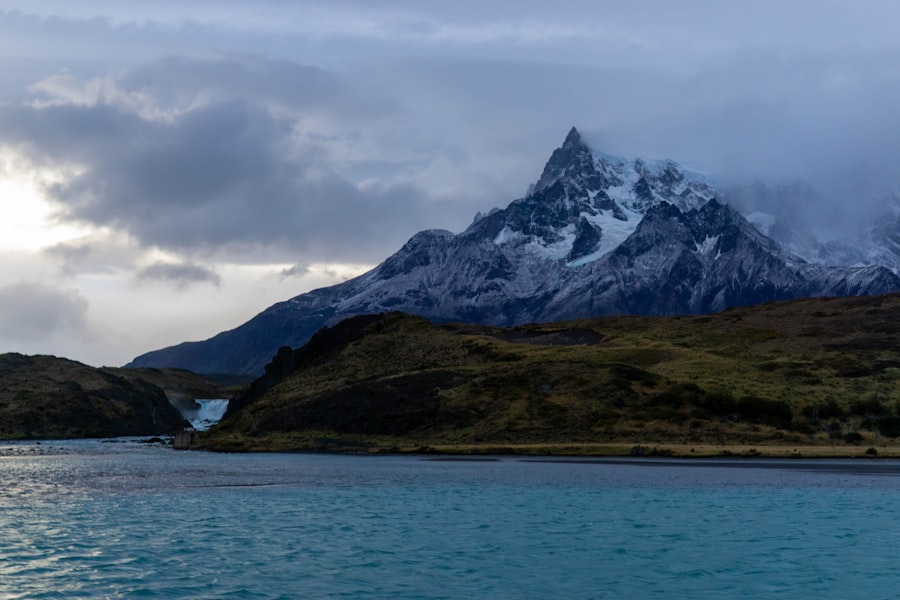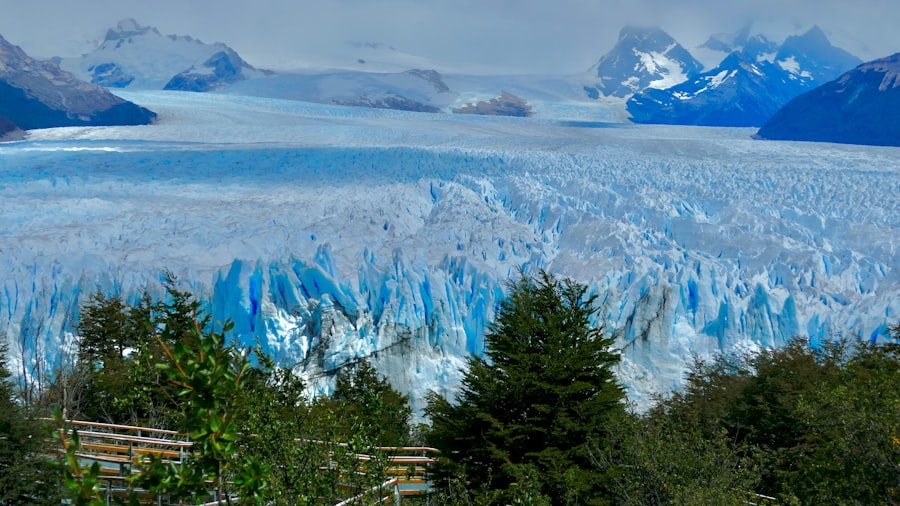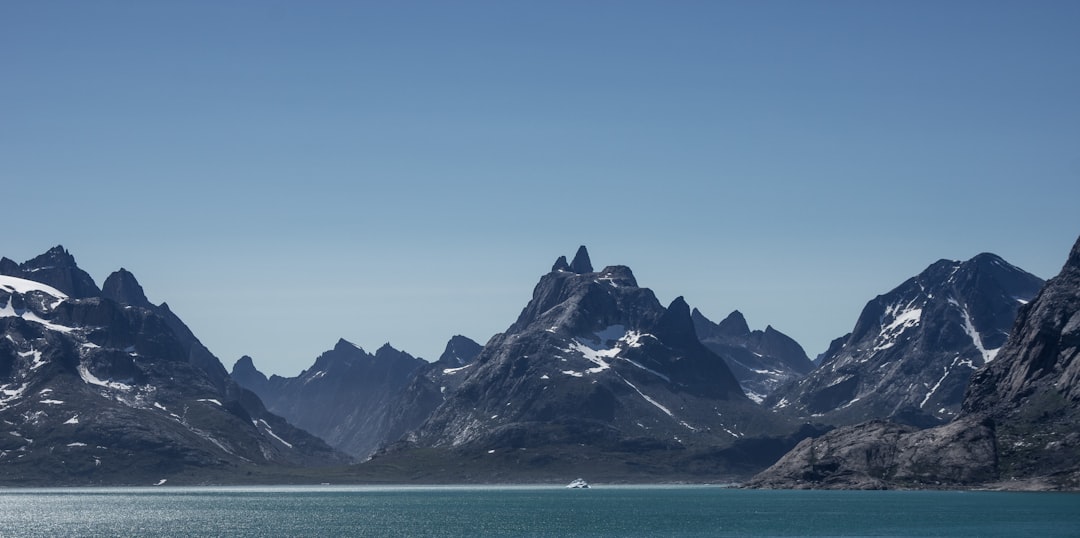The Patagonia Drake Passage, a body of water that separates South America from Antarctica, is renowned for its breathtaking beauty and formidable challenges. This narrow stretch of ocean, often regarded as one of the most treacherous maritime routes in the world, serves as a gateway for adventurers seeking to explore the pristine landscapes of Antarctica. The passage is named after the English explorer Sir Francis Drake, who navigated these waters in the late 16th century.
Today, it continues to captivate travelers with its dramatic scenery, rich biodiversity, and the allure of the unknown. As one embarks on a journey through the Drake Passage, they are not merely crossing a geographical boundary; they are entering a realm where nature reigns supreme. The waters are teeming with life, from majestic whales to playful seals, and the surrounding landscapes are dotted with icebergs and rugged coastlines.
However, the passage is not without its challenges. The unpredictable weather patterns and turbulent seas can test even the most seasoned mariners. For those who dare to venture into this wild frontier, the experience promises to be both exhilarating and humbling.
Key Takeaways
- The Patagonia Drake Passage offers a wild and adventurous journey for travelers seeking a unique experience.
- Navigating the Drake Passage presents challenges such as rough seas and unpredictable weather, requiring careful planning and preparation.
- Choosing the right vessel for the journey is crucial for a safe and comfortable experience in the Drake Passage.
- Packing and preparing for the adventure should include warm clothing, seasickness remedies, and essential travel documents.
- Wildlife spotting opportunities in the Drake Passage include sightings of whales, penguins, and various seabird species, providing unforgettable moments for travelers.
Understanding the Challenges of Navigating the Drake Passage
Navigating the Drake Passage is an endeavor that requires careful consideration and preparation. The passage is notorious for its rough seas, which can be attributed to the confluence of powerful ocean currents and strong winds. The infamous “Drake Shake,” as it is colloquially known, can turn a calm day into a tumultuous experience in a matter of moments.
Mariners must be prepared for sudden changes in weather and sea conditions, which can pose significant risks to vessels and their crews. Moreover, the passage’s unique geography contributes to its challenges. The narrow strait is flanked by the towering Andes mountains on one side and the icy expanse of Antarctica on the other.
This creates a funneling effect that can amplify wind speeds and wave heights, making navigation particularly treacherous. For those unfamiliar with these waters, it is essential to have a thorough understanding of maritime navigation techniques and to be equipped with reliable weather forecasting tools.
Choosing the Right Vessel for the Journey

Selecting the appropriate vessel for traversing the Drake Passage is crucial for ensuring a safe and enjoyable journey. Various types of ships are designed for different purposes, and not all are suited for the challenges posed by this particular stretch of water. Ice-strengthened vessels are often recommended for those planning to navigate close to Antarctica, as they are built to withstand harsh conditions and navigate through ice-laden waters.
In addition to ice-strengthening, travelers should consider factors such as size, stability, and onboard amenities when choosing a vessel. Smaller expedition ships may offer a more intimate experience, allowing passengers to get closer to wildlife and explore remote areas. Conversely, larger cruise ships may provide more comfort and amenities but could be less maneuverable in rough seas.
Ultimately, the choice of vessel should align with the traveler’s preferences and level of adventure sought.
Packing and Preparing for the Adventure
| Item | Quantity | Weight (lbs) |
|---|---|---|
| Tent | 1 | 5 |
| Sleeping Bag | 2 | 3 |
| Backpack | 1 | 2 |
| Water Bottle | 2 | 1 |
| Food (per person) | 3 days | 5 |
Preparation for a journey through the Drake Passage extends beyond selecting the right vessel; it also involves careful packing and planning. Travelers should prioritize comfort and functionality when assembling their gear. Layered clothing is essential due to the fluctuating temperatures and unpredictable weather conditions.
Waterproof outer layers, thermal undergarments, and sturdy footwear are vital components of any adventurer’s wardrobe. In addition to clothing, travelers should consider packing essential items such as binoculars for wildlife spotting, cameras for capturing breathtaking scenery, and seasickness medication to mitigate any discomfort during rough crossings. Personal items like sunscreen and lip balm are also important, as even in cooler climates, sun exposure can be significant.
By preparing adequately and packing thoughtfully, travelers can enhance their overall experience in this remarkable region.
Wildlife Spotting Opportunities in the Drake Passage
One of the most enchanting aspects of navigating the Drake Passage is the opportunity to encounter diverse wildlife in their natural habitats. The waters are home to an array of marine life, including various species of whales such as humpbacks, orcas, and minke whales. These majestic creatures often breach the surface, providing unforgettable moments for those fortunate enough to witness them.
In addition to whales, travelers may also spot seals lounging on ice floes or seabirds soaring overhead. The passage is a haven for birdwatchers, with species such as albatrosses and petrels frequently seen gliding gracefully across the waves. Each wildlife encounter adds a layer of magic to the journey, reminding travelers of the rich biodiversity that thrives in this remote corner of the world.
Safety Measures and Precautions for the Journey

Safety should always be a top priority when navigating the Drake Passage. Mariners must adhere to strict safety protocols to mitigate risks associated with rough seas and unpredictable weather conditions. This includes conducting thorough safety briefings before departure, ensuring that all crew members are trained in emergency procedures, and equipping vessels with essential safety gear such as life jackets, flares, and first aid kits.
Additionally, travelers should remain vigilant during their journey by staying informed about weather updates and sea conditions. It is advisable to maintain communication with experienced crew members who can provide guidance on navigating challenging situations. By prioritizing safety measures and remaining aware of potential hazards, adventurers can enjoy their experience while minimizing risks.
Navigating the Unpredictable Weather of the Drake Passage
The weather in the Drake Passage is notoriously unpredictable, often changing rapidly from calm to chaotic within hours. This variability can be attributed to several factors, including ocean currents, wind patterns, and geographical features surrounding the passage. As such, travelers must be prepared for a range of weather conditions during their journey.
Understanding how to read weather patterns is essential for safe navigation. Mariners should familiarize themselves with local forecasts and be prepared to adjust their plans accordingly. For instance, if storms are predicted, it may be wise to delay departure or alter routes to avoid treacherous conditions.
By remaining adaptable and informed about weather changes, travelers can enhance their chances of a successful crossing while minimizing exposure to adverse conditions.
Exploring the History and Culture of the Patagonia Region
The Patagonia region is steeped in history and culture that adds depth to any journey through the Drake Passage. Indigenous peoples have inhabited these lands for thousands of years, with rich traditions that reflect their deep connection to nature. The Mapuche people, among others, have left an indelible mark on Patagonia’s cultural landscape through their art, music, and storytelling.
European explorers also played a significant role in shaping Patagonia’s history. The legacy of explorers like Ferdinand Magellan and Charles Darwin continues to influence perceptions of this remote region today. Visitors can explore historical sites that tell stories of early expeditions and encounters between indigenous peoples and European settlers.
Engaging with local communities provides travelers with insights into contemporary life in Patagonia while fostering a greater appreciation for its cultural heritage.
Tips for Making the Most of the Journey
To maximize enjoyment during a journey through the Drake Passage, travelers should embrace flexibility and an open mind. While planning is essential, being adaptable allows adventurers to seize unexpected opportunities that may arise along the way. Whether it’s an impromptu wildlife sighting or a chance encounter with fellow travelers, these moments often become cherished memories.
Additionally, engaging with knowledgeable crew members can enhance the experience significantly. They often possess valuable insights about local wildlife, history, and navigation techniques that can enrich travelers’ understanding of their surroundings. Participating in onboard lectures or guided excursions can also provide deeper context for what one encounters during their journey.
The Importance of Sustainable Travel in the Patagonia Drake Passage
As interest in exploring remote regions like the Patagonia Drake Passage grows, so does the need for sustainable travel practices. The delicate ecosystems found in this area are vulnerable to human impact; therefore, responsible tourism is essential for preserving its natural beauty for future generations. Travelers should prioritize eco-friendly practices such as minimizing waste, respecting wildlife habitats, and supporting local communities.
Choosing operators that prioritize sustainability can make a significant difference in protecting this pristine environment. Many tour companies now implement measures such as reducing carbon footprints through efficient vessel design or engaging in conservation efforts that benefit local ecosystems. By making conscious choices during their travels, adventurers can contribute positively to preserving the unique character of Patagonia while enjoying its wonders.
Reflecting on the Wild Adventure of Navigating the Drake Passage
Navigating the Patagonia Drake Passage is an adventure that leaves an indelible mark on those who undertake it. From its breathtaking landscapes to its rich biodiversity and cultural heritage, this remarkable region offers an unparalleled experience for intrepid travelers. While challenges abound—ranging from unpredictable weather to navigating treacherous waters—the rewards are equally profound.
As adventurers reflect on their journey through this wild frontier, they carry with them not only memories of stunning vistas and wildlife encounters but also a deeper appreciation for nature’s power and fragility. The experience serves as a reminder of humanity’s connection to the natural world and underscores the importance of sustainable travel practices that protect these extraordinary environments for generations to come. In traversing the Drake Passage, travelers embark on more than just a physical journey; they engage in an exploration of self-discovery amid nature’s grandeur.
The Drake Passage is a legendary body of water that serves as a gateway to the Antarctic, known for its challenging conditions and breathtaking beauty. For those interested in exploring this remarkable region, Patagonia offers a unique vantage point to experience the raw power and stunning landscapes of the passage. An article that delves into the intricacies of navigating the Drake Passage and the surrounding areas can be found on MyGeoQuest. This resource provides valuable insights and tips for adventurers looking to embark on this unforgettable journey. To learn more, check out the article on MyGeoQuest.
WATCH HERE: Drake Passage: Earth’s Deadliest Waters Revealed
FAQs
What is the Patagonia Drake Passage?
The Patagonia Drake Passage is a body of water located between the southern tip of South America (Cape Horn) and the South Shetland Islands of Antarctica. It is known for its notoriously rough seas and challenging sailing conditions.
Why is the Patagonia Drake Passage significant?
The Patagonia Drake Passage is significant because it represents the shortest crossing from Antarctica to any other landmass. It is also a crucial route for marine wildlife, including whales, seals, and seabirds.
What is the weather like in the Patagonia Drake Passage?
The weather in the Patagonia Drake Passage is characterized by strong winds, high waves, and rapidly changing conditions. It is known for its stormy and unpredictable weather, making it a challenging area for navigation.
Can tourists visit the Patagonia Drake Passage?
Yes, tourists can visit the Patagonia Drake Passage by taking expedition cruises that navigate through the area. These cruises often depart from Ushuaia, Argentina, and offer the opportunity to experience the unique wildlife and dramatic landscapes of the region.
What wildlife can be found in the Patagonia Drake Passage?
The Patagonia Drake Passage is home to a diverse range of wildlife, including various species of whales, such as humpback and minke whales, as well as seals, penguins, and numerous seabirds. It is a popular destination for wildlife enthusiasts and photographers.
